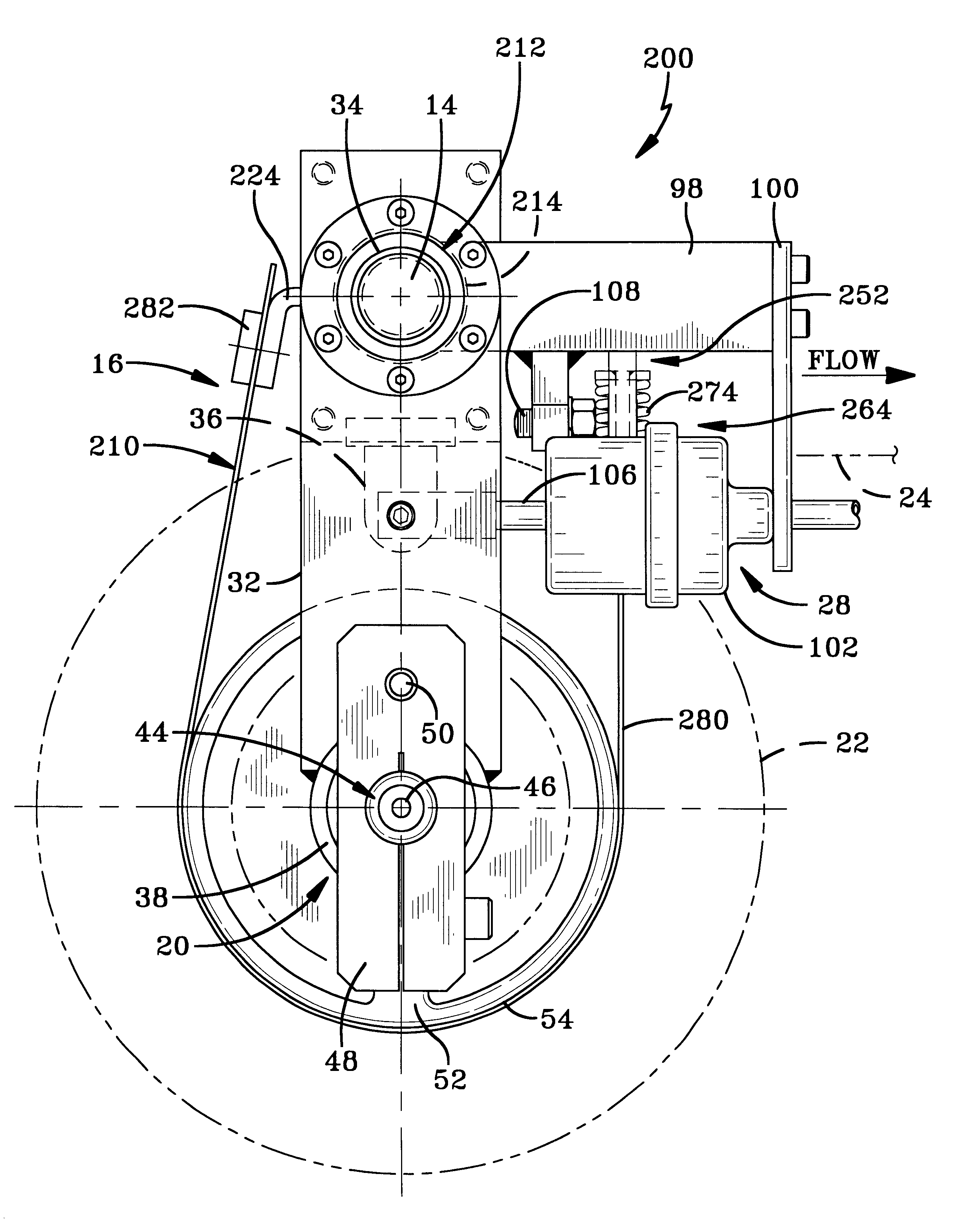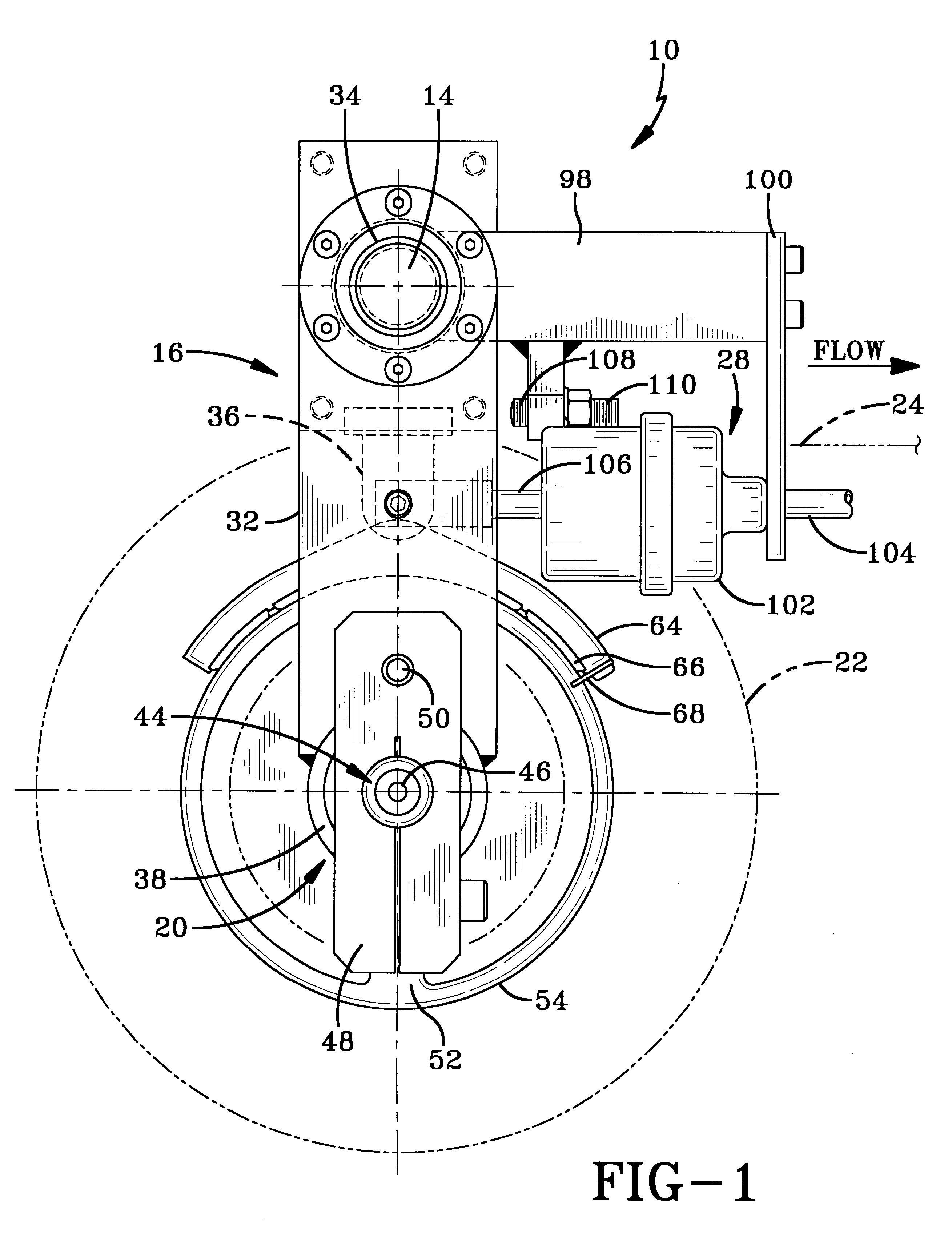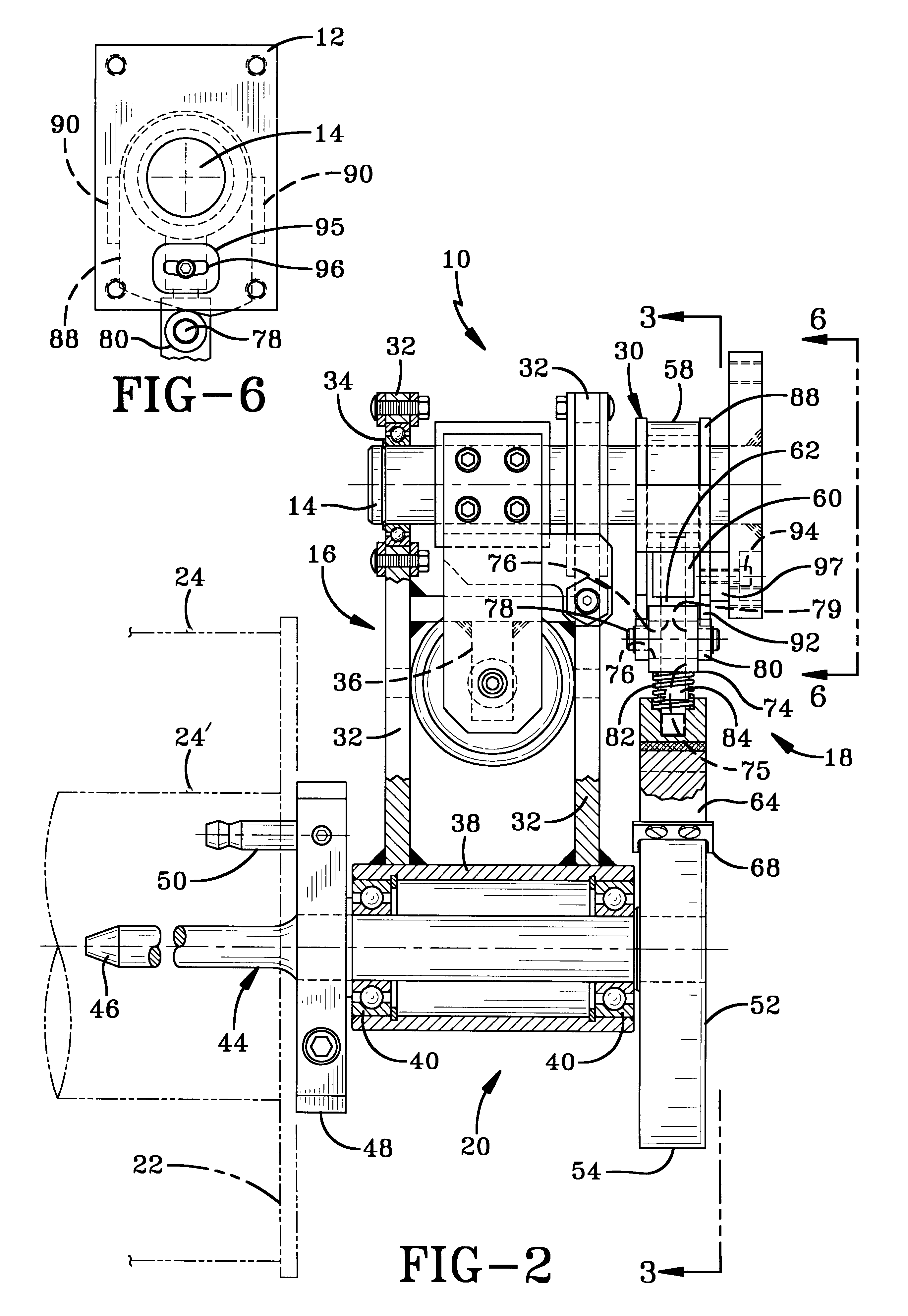Self-compensating filament tension control device employing a friction band
a friction band and tension control technology, applied in the direction of filament handling, fluid actuated drum brakes, thin material handling, etc., can solve the problems of large multiplicity, unfavorable hunting or loping of creels, and multiple individual adjustments of creels having variable tension control, etc., to achieve the effect of convenient adjustmen
- Summary
- Abstract
- Description
- Claims
- Application Information
AI Technical Summary
Benefits of technology
Problems solved by technology
Method used
Image
Examples
Embodiment Construction
An exemplary self-compensating filament tension control device according to the concepts of the present invention is generally indicated by the numeral 10. As best seen in FIGS. 1, 2, and 6, the tension control device 10 includes a frame support 12 from which a fixed shaft 14 integrally extends. The frame support 12 may be part of a creel or other support structure which is part of a machine that processes individual strands of filamentary material into a finished manufactured item. It will be appreciated that the frame support 12 may also be employed to support multiple devices 10 as needed.
A swing frame assembly, generally indicated by the numeral 16, is pivotably mounted upon a distal end of the fixed shaft 14. Also pivotably mounted upon the fixed shaft 14 is a braking assembly generally indicated by the numeral 18. The braking assembly 18 is shown positioned between the swing frame assembly 16 and the fixed support 12. A spindle assembly, generally indicated by the numeral 20, ...
PUM
 Login to View More
Login to View More Abstract
Description
Claims
Application Information
 Login to View More
Login to View More - R&D
- Intellectual Property
- Life Sciences
- Materials
- Tech Scout
- Unparalleled Data Quality
- Higher Quality Content
- 60% Fewer Hallucinations
Browse by: Latest US Patents, China's latest patents, Technical Efficacy Thesaurus, Application Domain, Technology Topic, Popular Technical Reports.
© 2025 PatSnap. All rights reserved.Legal|Privacy policy|Modern Slavery Act Transparency Statement|Sitemap|About US| Contact US: help@patsnap.com



